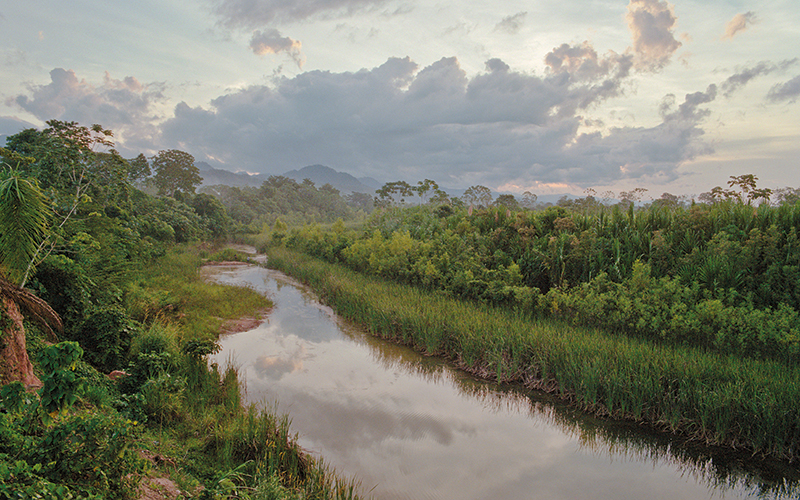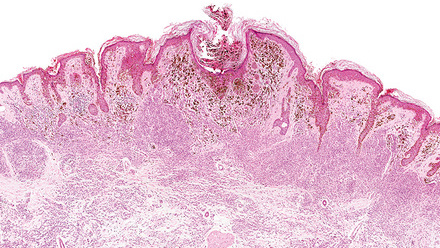My Lab: In the Bolivian Amazon

I have to start with a confession really – I don’t actually work in a physical lab. I am a registered scientist (RSCi) for the Andean Medical Mission (AMM), a UK charity working in the Bolivian Amazon, an area of 213,564 square km of jungles intersected by winding rivers and swamps (England is 130,279 square km, for reference). Within this geography live 450,000 people who have very limited access to any health care and, as a result, blindness levels are extremely high here. According to the London School of Hygiene and Tropical Medicine’s Rapid assessment of avoidable blindness estimate, 3.8% of over 50s living in northern Bolivia are blind or severely visually impaired. Being blind anywhere must be incredibly difficult, but in the Amazon it is disproportionally harsh.
So, our work, (my job) is to bring that figure down by eliminating as much avoidable blindness as possible. The goal is to bring this figure to <1%, which would be in line with other south American countries with similar geographies.
We start with understanding how many people are blind and why. My role over the last 10 years has been to answer that question. I travel all over this area visiting village communities by 4×4, boat, aircraft and sometimes hiking. AMM has gathered data on more than 12,000 patients through audits and questionnaires, histology study, impression cytology and screening programmes.
We have shown that cataract (40%), pterygium (22%) and unattended trauma (30%) make up most of the avoidable blindness here. To combat this, my role and that of the medical directors of AMM has been to drive three strategies to bring blindness down:
- Continue to study factors leading to blindness here and what can be done to prevent this.

© Image credit | Getty - Train village doctors in the clinical management of eye emergencies and provide them with 24-hour support by WhatsApp. (The Amazon has better mobile signal than you’d think.) We can normally confirm a diagnosis and provide a management plan for eye trauma within half an hour.
- To carry out ophthalmic surgery and medical intervention to reduce the backlog of cataract and pterygium blindness. My role here is to build suitable volunteer teams, make equipment and medical purchases, select patients and set up a suitable hospital theatre/sterile environment in which to operate. Over the last 10 years AMM has successfully operated on over 1000 patients, restoring their vision in many cases from perception of light to normal vision for their age.
I love my “lab” and feel very privileged to work here. Although I work very much alone for a large part of the year (I am writing this article two days before setting off on a new expedition) I feel very supported by the IBMS and the amazing directors of AMM.
Dave Goldsmith is an RSCi and General Manager at AMM. For more information, visit andeanmedicalmission.co.uk and visit facebook.com/AndeanMedicalMission should you like to support the charity, or if you have any questions.


